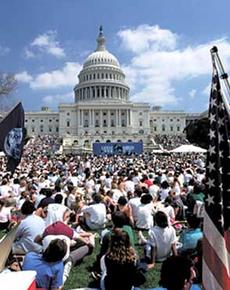
What Is the Public's Role in Government?

So, who are we? Customers? Taxpayers? Citizens? Or something else? And how should government managers respond, given the differences implied by these various roles? A recent academic article by Georgia State University professor John Clayton Thomas provides some useful context, as well as practical guidelines for public managers. He starts by saying it is not an “either/or” distinction, but rather “all of the above,” depending on context.
The academic literature describes a wide range of roles the public potentially can be described vs. the government, but Dr. Thomas focuses on three where there is substantive interaction with public mangers:
- The public as Customers
- The public as Partners
- The public as Citizens
“The three roles reflect central ideas from successive waves of rethinking public management and public administration over the past half century,” observes Thomas. He goes on to note that “public administrators need to know how to interact with the public in each and all of the three roles.” But they have to first “understand the nature of these publics, including what people expect as citizens, customers, and partners.”
The Public as Customers. Customers of government services, Thomas says, are looking for discrete services, such as garbage pick up. These services tend to be discrete transactions that are either “one-off” services (e.g., applying for a passport) or involve a continuing relationship over time (e.g., job training). Thomas notes “more people interact with government as customers . . . than in any other capacity.”
At the federal level, interest in customer service peaked during the Clinton Administration reinventing government initiative, with a series of presidential directives to develop standards for customer service and track customer satisfaction for various services across the government.
Several guidelines for public managers that the author proposes include:
- At the local level, develop centralized contact points, such as a 311 call center or web page, to receive and respond to citizen inquiries.
- At all levels, make contact points available via mobile devices.
- Provide high-quality customer service and use a case management/customer relations management system
There is currently legislation pending in Congress to require federal agencies to set standards, track performance, and link these efforts to employee performance appraisals.
The Public as Partners. The government is not necessarily the sole provider of services and solutions in a community. Citizens can choose to play a role, as well. Thomas notes: “Crime, for example supposedly cannot be prevented by police action alone; it requires assistance from citizens and communities.”
He goes on to say that today the “pursuit of public ends supposedly occurs mostly through networks of private and nonprofit entities, members of the public, and governments, in a phenomenon that has become known as ‘governance.”” As a result:
“extensive coproduction [is seen] as essential because customers must join in ‘customizing’ many products and services. . . . “The need for coproduction has probably expanded as a consequence of the work of government – and the private sector – becoming more about services than products.”
Several guidelines for public managers that the author proposes include:
- Define the assistance desired in advance and simplify the associated processes as much as possible before reaching out for a public response.
- Find ways to both encourage public contributions as well as support their ability to contribute (e.g., providing books for volunteers to use to help improve children reading)
Several IBM Center reports address a range of coproduction approaches:
Beyond Citizen Engagement: Involving the Public in Co-Delivering Government Services, by Drs. P.K. Kannan and Ai-Mei Chang, and Engaging Citizens in Co-Creation in Public Services, by Drs. Satish and Priya Nambisan.
The Public as Citizens. The traditional approach to citizen involvement has been via voting. However, President Obama’s signature Open Government initiative in 2009 was aimed at creating a greater role for citizens in developing collective choices about the development of policy as well as the delivery of various services. Federal agencies have developed plans that reflect their strategies for engaging citizens to do this. And at the local level, several communities, such as Chicago, are developing “participatory budgeting” initiatives to engage citizens in making funding choices in their communities.
Several guidelines for public managers that the author proposes include:
- Define the standards, budget constraints, and other boundaries of citizen involvement in policy or service delivery initiatives.
- Recognize that meaningful citizen engagement requires sharing some degree of decision-making.
- Proactively engage the full range of stakeholders involved in a decision, to ensure a sense of legitimacy and fairness in the outcome.
- Use multiple techniques and offer multiple opportunities for engagement.
Several IBM Center reports address practical approaches public managers can take to better engage citizens in their programs and policies: Public Deliberation: A Manager’s Guide to Citizen Participation, by Carolyn Lukensmeyer and Lars Hasselblad Torres, and A Manager’s Guide to Evaluating Citizen Participation, by Dr. Tina Nabatchi.
Key Take-Away. While Dr. Thomas focused on three roles that the public plays in their respective communities, there are others, such as taxpayer, client, stakeholder, “regulated entity,” and user. The key take-away for public managers, though, is that managers need to understand whichever role the public has assumed when interacting with them, since the specific role may define the strategies and approaches public managers may undertake.



